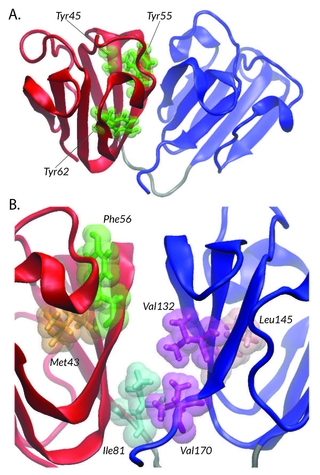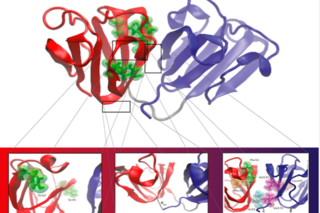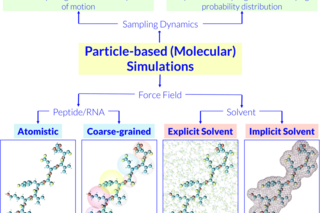
γD-crystallin structure highlighting (a) the N-terminal domain aromatic residues and (b) hydrophobic residues of interdomain interface.
The second law of thermodynamics implies that the universe is constantly shifting to being less ordered and organized by inevitably increasing its entropy. However, life as we know it depends on a high degree of organization ranging from subcellular structures and biomolecular complexes to tissues and organs. The physical origin of such organization is, nevertheless, not fully understood. Although it is known that cells cannot maintain their integrity without consuming energy, there is a growing body of evidence suggesting that certain assembly processes can be thermodynamically driven and occur spontaneously due to changes in thermodynamic variables such as intermolecular interactions and constituent concentrations.
Some of these thermodynamically driven processes such as formation of membraneless organelles via liquid-liquid phase separation, reorganization of proteins and lipids in biological membranes, and tissue sorting are physiologically vital whereas others such as protein aggregation and denaturation, are pathological. For instance, Alzheimer’s disease (AD), Parkinson’s disease (PD), Amyotrophic Lateral Sclerosis (ALS), and cataract all occur as a result of the abnormal emergence of pathological assemblies in cells and tissues.
In our group we are interested in employing and developing computational techniques rooted in molecular thermodynamics and statistical physics to elucidate the aggregation kinetics of such biomolecular systems. We are particularly interested in the aggregation dynamics of γ-crystallin, a protein in the human lens that is associated with age-onset cataract. Revealing the range of timescales of such rare biological events can provide invaluable information for early disease detection and possible therapeutic interventions.
Related Work
-
36. Effect of Pressure on the Conformational Landscape of Human γD-Crystallin
Kacirani A., Uralcan B., Domingues T. D., Haji-Akbari A. J. Phys. Chem. B (2024) 128, 20, 4931–4942.
-
22. Thermodynamically Driven Assemblies and Liquid-liquid Phase Separations in Biology.
Falahati H, Haji-Akbari, A. Soft Matter 15: 1135 (2019)

